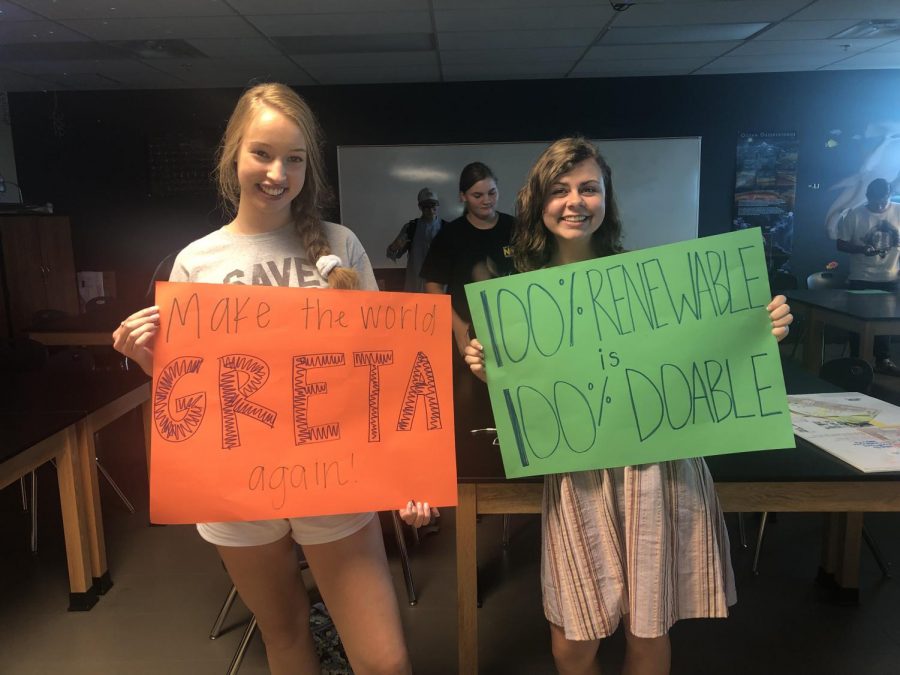Climate Change Story
Climate change has been labeled as a ‘crisis’ in the past 5 years by the news, some researchers, and social media. This ‘crisis’ was seen as an issue that had to be dealt with by the adults of that time. Although, recent events have caused the children and teens of this generation to try and handle the problem of climate change. Thunberg has inspired children to save the planet because in her words, “We must hold the older generations accountable for the mess they have created. … and say to them you cannot continue risking our future like this.”
Students have been taking to the streets all over the world and protesting for change in government policies to save our planet. A strike happened September 20 in Kansas City Missouri, near Liberty North High School, that some students took part in.
“Knowing that this is the movement, which has the potential to change the world for the better, inspired me to join in the strike. Knowing that without this movement, the planet could be hurt permanently was another reason I went to the strike. I felt like I needed to do something,” senior Jaeda Dickens said.
Elementary school children can protest and get the attention of the leaders of the nation, but high schoolers can get the information and take the proper measures to get certain bills passed in Congress to help the climate crisis. Unfortunately, high schoolers have a bigger voice, rather than younger children in big protests like the climate crisis strike.
“I believe high schoolers have an incredible ability to be annoyingly pushy. If we push politicians and powerful people enough, we can make meaningful change,” senior Chance Tacia said.
At Liberty North, the science classes are none by some to try and push environmentally-friendly habits on students while at school. This strike further pushed some students at the school to further these habits.
“I think we could use significantly less plastic, encourage the use of water bottles from home, try to educate students about what can be recycled and should be recycled, what can be recycled but really shouldn’t bc of what the process of recycling will do to the atmosphere, all that fun stuff. I think a lot of education needs to happen,” Dickens said.
Liberty North’s AP Environmental Science class tackles basic environmental curriculum, along with current problems in the world like extinction, food shortages, overpopulation, and of course, climate change.
“I try and teach kids at the beginning of the year about how the climate is always changing. It’s expected to change and that there is evidence that shows that it has been changing in the past. The question I ask is: Are humans impacting climate change and are there things that humans can do to mitigate that. We look at climate change, but specifically air pollution, and how that is impacting the climate. With that, we look at how we can decrease the amount of air pollution,” AP Environmental Science teacher Gretchen Hubinger said.
Since children are the ones protesting, the protesting signs can be quite comical to the audience in protests like this.
“‘Unless someone likes you cares a whole awful lot, nothing is going to change. It’s just not,’ and ‘I am the Lorax, I speak for the trees. Litter again and I’ll break your hecking knees.’ I like the Lorax and the first quote makes me tear up every time,” Dickens said.
A change of lifestyle is a hard thing to ask of high schoolers, but Global/WebIndex statistics say that Generation Z has the highest percentage (58%) of agreement on if they would pay more for eco-friendly products.
“I think the best you can do is be conscious. Asking for people to change their lifestyles is extremely difficult for older generations. But being environmentally conscious is effective and easy for all,” Tacia said.
To learn more about climate change:


